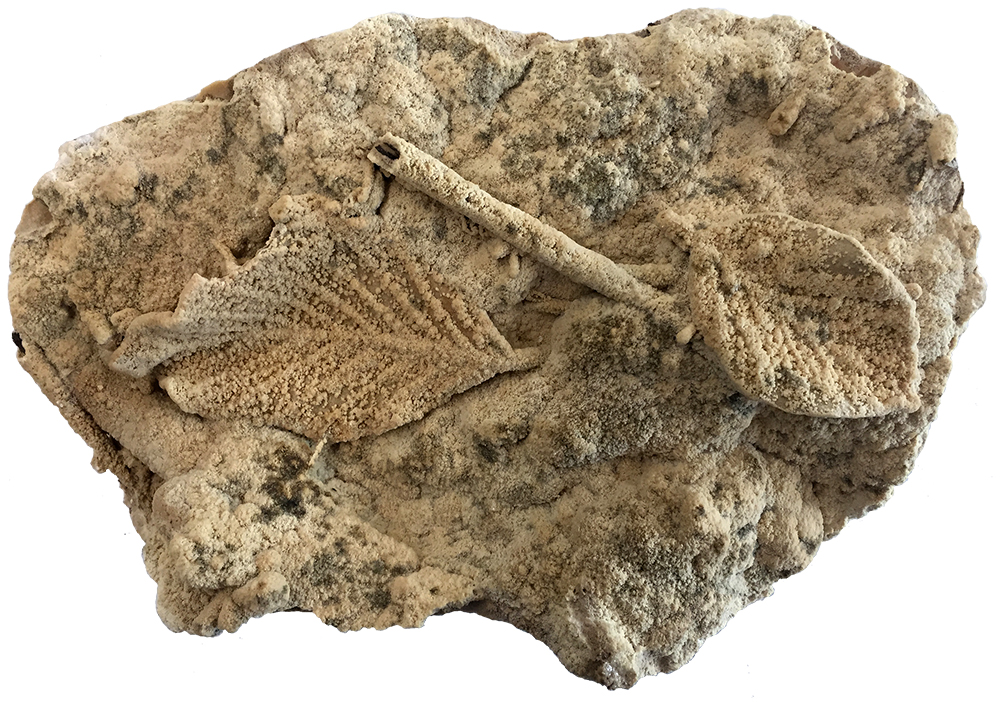
13,500 years old, Tirol region of Austria
These fossil leaves underwent an unusual mode of preservation when they fell near active travertine hot springs on mountain slopes in Austria. Degassing of dissolved carbon dioxide from the mineral-rich spring waters led to the precipitation of layers of fine calcite and aragonite crystals on leaf and twig debris around the springs. Travertine precipitation not only preserved exquisite detail of the surfaces of these leaves and twigs, but also encased their original organic material to prevent its further decay.
These Eastern Tyrol, Austria hot springs are no longer active. Travertine is not currently precipitated, despite the springs still being supersaturated with calcite and aragonite. The original travertine deposits these leaves came from were associated with metamorphic rocks. They probably formed when fractures opened in the underlying mountainside rock in response to deep slope movement. The opening of those fractures resulted in short-lived groundwater discharge events that drove travertine precipitation. Hence these fossil leaves are not just a reflection of past life, a moment of forest floor cover caught in time, but also an indirect record of the active evolution of groundwater systems due to tectonic stress.